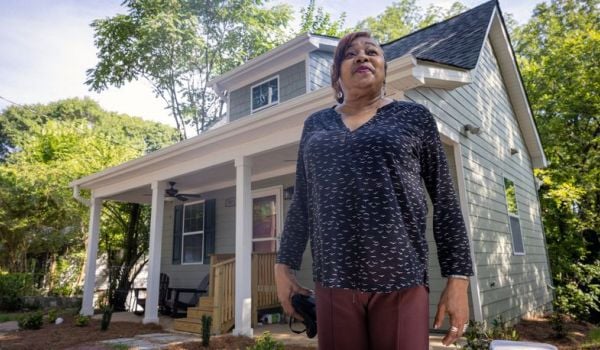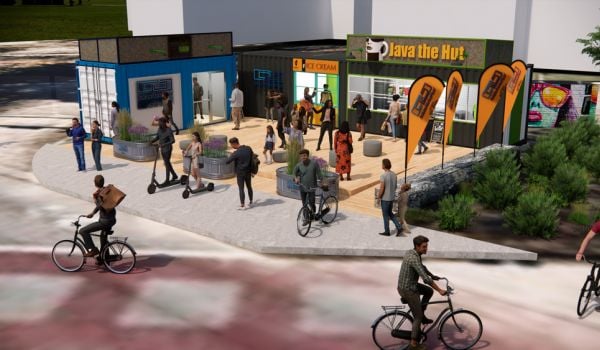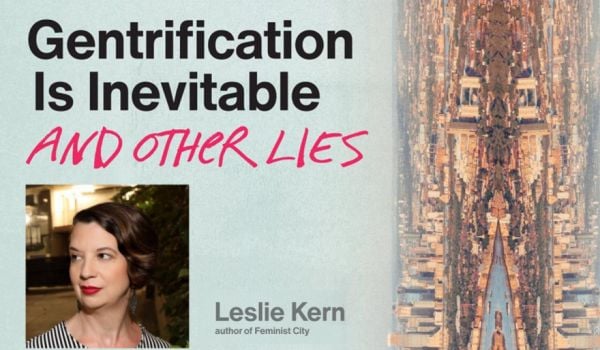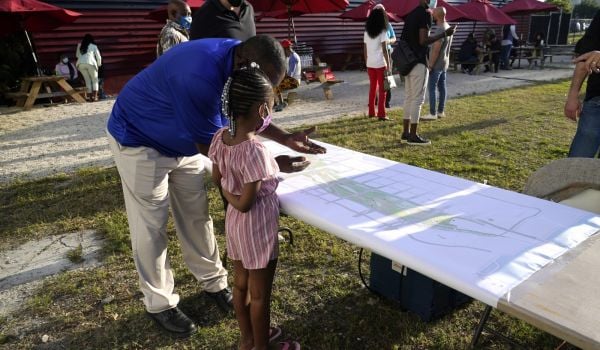Concerns about affordable housing, gentrification and displacement have accompanied the development of the Atlanta BeltLine since its earliest days. The vision for the project — a 22-mile multi-use trail built on an old railway line looping the entire city of Atlanta — was so clear a catalyst for rising real estate value that the original development plan, completed in 2005, included a goal of building 5,600 workforce housing units to mitigate the impacts of gentrification. Now, with more than half the time elapsed before the projected completion date of 2030, the BeltLine is still scrambling to make good on the promise of affordable housing. And some advocates say too much damage has already been done in terms of displacement, runaway home values, and speculative investment.
Late last year, the Atlanta BeltLine Partnership and Atlanta Beltline, Inc., launched a Legacy Resident Retention Program meant to help existing homeowners stay in their homes as property values, and taxes, continue to rise. The program is aimed at homeowners who have lived in and occupied their homes since at least 2017 and who earn less than 100% of area median income, which in Atlanta is $79,700 for a family of four. The program will cover the increased cost of property taxes for eligible homeowners through 2030. It’s open to people living in a handful of neighborhoods in south and west Atlanta where new BeltLine trails are expected to be completed in the next few years.
The groups running the program expect that some 2,500 homeowners are eligible in the targeted area, and that the program could cost $12.5 million over the next decade, says Rob Brawner, executive director of the Atlanta BeltLine Partnership, a nonprofit that helps guide the implementation of the BeltLine plan. So far, they’ve raised $500,000 from the electric utility Georgia Power, and $200,000 from Bank of America. To date, 128 homeowners have applied to the Legacy Resident Retention Program and 21 have been approved. It’s a small start, Brawner says, but the groups are looking for more funders, and being careful only to commit to those applicants that they know they can assist through the next ten years.
“We know that the long-term solution for this is not for philanthropy to indefinitely pay people’s property-tax increases,” Brawner says. “The long-term solution is a tax policy solution … That’s going to take some time, and we couldn’t afford to lose people [in the meantime].”
The new effort comes amid long-running frustration over the BeltLine’s efforts to provide affordable housing and prevent displacement of low-income residents. In 2016, two members of the Atlanta BeltLine Partnership — including Ryan Gravel, who proposed the idea as a graduate student in 1999 — resigned from the group, saying that the BeltLine had not made enough progress toward its affordable-housing goals or vision of equitable development. The next year, the Atlanta Journal-Constitution ran a report describing how the BeltLine “broke its promise on affordable housing.” As of 2020, according to the BeltLine’s annual report, around 38% of the housing goal, or 2,153 units, had been completed.
For housing advocates, the BeltLine has moved too slowly to make investments and implement policies that protect nearby low-income residents.
“It’s been very difficult to really get [Atlanta BeltLine Inc.] to understand what this development project has done to communities and is currently still doing in communities,” says Alison Johnson, executive director of the Housing Justice League, an organizing and advocacy group in Atlanta.
The Housing Justice League has published an Affordable Housing Policy Package as part of a BeltLine for All campaign, which calls for the city and the BeltLine to lower the threshold of affordability to serve truly low-income people rather than middle-income residents, and to put vacant land to use for affordable housing. It also calls for the creation of a Tenant Opportunity to Purchase Act in Atlanta (similar laws have preserved thousands of units of affordable housing in other cities), tax breaks for landlords who lease apartments at affordable rates to low-income tenants, a property-tax cap on low-income homeowners, and local rent control. Johnson says she hopes that the BeltLine fulfills the remainder of its affordable-housing goal with units that are affordable for people earning less than 30% of AMI. The Legacy Resident Retention Program, she says, may be “too late.”
Daniel Immergluck, a professor of urban studies at Georgia State University, has been studying the BeltLine’s impact on speculative investment and gentrification for more than a decade. Atlanta Beltline, Inc., has been dragged “kicking and screaming” into a more meaningful engagement with affordability.
“This is not an organization that, in my opinion, has a sincere commitment to affordable housing,” Immergluck says.
Because the BeltLine loops the whole city, more than 20% of Atlanta falls within half a mile of the proposed route, Immergluck notes. That means the BeltLine has had a huge impact on housing markets all over town — not just concentrated in one part of the city. In order to really address the impacts of gentrification, the BeltLine and other large-scale urban projects like it need to make affordability their first priority, even before implementation, Immergluck has argued.
“The good thing about this [Legacy Resident Retention Program], although it’s at least 10 years too late, is that it focuses on existing residents,” Immergluck says. Even if the BeltLine quickly follows through on the remainder of its affordable-housing commitment, those new units will be marketed to new residents, he says.
“It’s good that they’re at least focusing on some legacy low- and middle-income residents,” he says. “I personally don’t think it should matter how long you’ve been there. It should be any low-income resident … This should be a systemic change in the way property taxes are done in the city.”
While a change to tax policy could require a tough political fight in the state legislature, Immergluck says the city and the BeltLine have the clout to push it if they really believe in it. For its part, Atlanta BeltLine, Inc., says the new program is just one of a range of efforts focused on affordability in the BeltLine-adjacent neighborhoods and citywide, from a variety of organizations, including the Atlanta Land Trust.
“The Atlanta BeltLine’s success depends on a number of factors, including creating and preserving affordability; reducing residential, commercial, and cultural displacement; and a fair chance for every person to fulfill their potential and thrive,” says Clyde Higgs, the CEO of Atlanta BeltLine, Inc., in an email. “Over the past several years, Atlanta BeltLine, Inc. has dedicated millions more in funding towards affordable housing, implemented a land acquisition strategy to allow for longer and deeper affordability, worked alongside the City of Atlanta to pass Inclusionary Zoning, hired a Chief Equity and Inclusion Officer, and expanded our research and data to identify and dedicate resources to areas that need more support.”
While advocates are glad to see a new effort to protect long-time homeowners, they’re still waiting for the promise of equity and affordability along the BeltLine to come to fruition.
This article is part of Backyard, a newsletter exploring scalable solutions to make housing fairer, more affordable and more environmentally sustainable. Subscribe to our weekly Backyard newsletter.

Jared Brey is Next City's housing correspondent, based in Philadelphia. He is a former staff writer at Philadelphia magazine and PlanPhilly, and his work has appeared in Columbia Journalism Review, Landscape Architecture Magazine, U.S. News & World Report, Philadelphia Weekly, and other publications.
Follow Jared .(JavaScript must be enabled to view this email address)


















